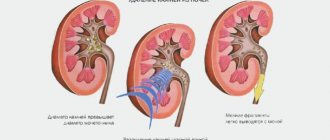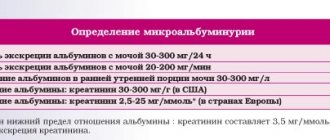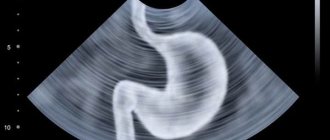Calcium takes part in building bones, blood clotting, muscle contraction and nerve impulse conduction. An analysis to detect it is needed if there is a suspicion of osteoporosis, thyroid and kidney function, as well as to evaluate the results of the treatment.
Read further in our article about what the level of calcium in the blood depends on, the rules for testing for determination in daily urine, as well as the interpretation of the results.
What determines the excretion of calcium by the kidneys?
Normally, calcium ions are in the blood; when passing through the kidneys, a process of reabsorption occurs, that is, they remain in the bloodstream. A small amount of the mineral is excreted from the body. If there is an excess of salts in the blood, then the kidney tubules do not try to retain them, and the amount of calcium in the urine increases.
The concentration of a microelement is influenced by:
- food supply;
- absorption from the intestine;
- the rate of destruction of old bone tissue and the construction of new one;
- urine filtration by the kidneys;
- the level of phosphates that bind the mineral (as they increase, calcium decreases);
- intake of vitamin D through the skin and food (helps absorb the trace element from food and retain it in the kidneys).
Regulation of the content of calcium salts in the body depends on the functioning of the thyroid and parathyroid glands. The first releases calcitonin. It helps calcium to be incorporated into bones, and its concentration in the blood and urine decreases. The parathyroid glands produce parathyroid hormone, which helps increase the level of the mineral in biological fluids.
We recommend reading the article about blood tests for osteoporosis. From it you will learn who is recommended to take a blood test for osteoporosis, what tests need to be taken for osteoporosis.
And here is more information about calcium supplements for osteoporosis.
Interpretation:
- Primary and tertiary hyperparathyroidism, malignant tumors, polycythemia vera, pheochromocytoma (combined with parathyroid hyperplasia), sarcoidosis, vitamin D intoxication, Paget's disease, thyrotoxicosis, acromegaly, diuretic phase of acute tubular necrosis, dehydration, familial hypocalciuric hypercalcemia, iatrogenic hypercalcemia.
- Hypoparathyroidism, pseudohypoparathyroidism, alcoholism, liver cirrhosis, hypoalbuminemia, magnesium deficiency, vitamin D; Chronic renal failure, long-term therapy with anticonvulsants, acute pancreatitis, hyperphosphatemia, massive blood transfusions, hypofunction of the anterior lobe
Sample result (PDF)
Who needs to donate calcium in daily urine
Your doctor may order a test for calcium excretion through the kidneys in the following situations:
- determining the sufficiency of intake from food and medicines;
- study of the level of absorption in the intestine;
- determining the cause of low bone mineral density (osteopenia, osteoporosis), the need to evaluate the results of treatment;
- suspicion of urolithiasis - pain and cramping when urinating, attacks of severe pain in the lumbar region, bleeding in the urine;
- detected increase or decrease in the function of the thyroid and parathyroid glands;
- diseases of the small intestine with insufficient absorption - nonspecific ulcerative colitis, consequences of removal of part of the intestine, cystic fibrosis.
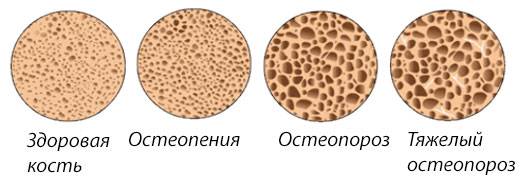
Stages of bone density destruction
Indications for use
1. Diagnosis and monitoring of osteoporosis. 2. Assessment of the condition of the parathyroid glands (including after thyroidectomy), diseases of the pituitary gland and thyroid gland.3. Diagnosis and control of rickets therapy. 4. Bone diseases, bone pain. 5. Peptic ulcer of the stomach and duodenum. 6. Muscle hypotonia, convulsive syndrome, paresthesia. 7. Cardiovascular pathology (rhythm and vascular tone disturbances). 8. Malignant neoplasms (breast cancer, lung cancer). 9. Urolithiasis (X-ray-positive stones) and other kidney diseases, polyuria.
When the analysis does not provide the necessary information
Determination of calcium in urine is a fairly reliable, economical and simple method for diagnosing metabolic disorders. However, there are limitations to the purpose of the analysis.
Distortion of indicators can occur in the following conditions:
- prolonged immobility of the patient;
- extensive injuries;
- increased phosphorus levels in the blood and urine;
- exposure to the open sun during the summer holidays, sunbathing in a solarium;
- the patient did not take into account the preparation requirements or collected urine incorrectly.
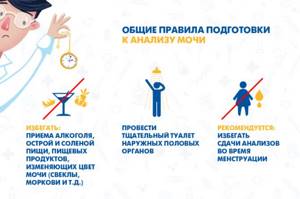
How to collect material
10 days before the test, the patient should discuss with the doctor the possibility of using medications, vitamin complexes and nutritional supplements; catheters can affect the result. For two days, diuretics and herbs with this effect, alcohol and dark-colored vegetables, fruits, berries (beets, carrots, blueberries, blackberries, citrus fruits) are discontinued.
You need to collect urine in a container that is pre-sterilized. Its volume must be at least 3 liters. If a glass jar is used for this, then it is thoroughly washed with soda and doused with boiling water twice. The lid is processed in the same way. On the morning of the test day, the first portion of urine is not collected. The patient should pour all the rest into a prepared container, kept closed in the refrigerator.
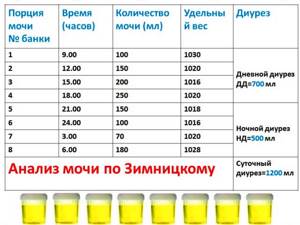
The next morning, the first void is added to the collected urine and the entire volume is measured. Approximately 100 ml should be poured into a standard urine collection container and taken to the laboratory. The accompanying note indicates the daily amount of urine and medications taken, if they could not be canceled.
Decoding indicators
The obtained results are compared with the reference ones. This is what the average normal values are called. The predominant research method is colorimetric, based on the change in the color of the solution when a reagent is added. Different laboratories may use different reagents and methods, so the normal value is always indicated next to the patient’s data.
Norm of calcium in daily urine
The dependence of normal values of calcium in urine on the age of the subject can be traced.
| Age, years | Calcium in urine per day, mmol/l |
| Up to 1 | Not higher than 1.85 |
| From 1 to 4 | 1,9 — 2,55 |
| From 4 to 5 | 2,3 — 3,5 |
| From 5 to 7 | 2,8 — 4,55 |
| From 7 to 12 | 2,5 — 6,9 |
| From 12 and adults | 2,5 — 7,5 |
Periods of accelerated growth, pregnancy and lactation are accompanied by increased consumption of the microelement, so its slight decrease is noted. If the patient's diet is dominated by dairy products and fatty fish, then the calcium content increases slightly. Such conditions do not require treatment and are regulated by nutrition.
Increased mineral
Excess calcium in urine may be associated with the following diseases:
- stones in the kidneys and urinary tract;
- hereditary diseases with damage to the renal tubules;
- sarcoidosis;
- increased function of the parathyroid glands, thyroid dysfunction;
- tumor processes, bone metastases;
- tuberculosis;
- gangrene;
- adrenal insufficiency;
- extensive inflammation of the peritoneum;
- fractures with prolonged immobilization (forced immobility due to a plaster cast, fixation of the limb);
- paralysis, the need for strict bed rest after surgery;
- taking vitamin D, anticonvulsants, Diacarb, Furosemide, Veroshpiron.
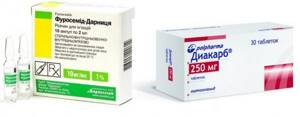
Low calcium
Low mineral concentrations may be due to:
- increased loss of protein and phosphorus in the urine due to nephritis, renal failure;
- low function of the parathyroid glands;
- intestinal diseases with malabsorption;
- liver damage;
- the use of drugs and their analogues: Prednisolone, Hypothiazide, birth control pills, female sex hormones, Methindol, vitamin K, A, ascorbic acid, lithium;
- lack of sun exposure, insufficient consumption of milk, cheese, fish.
A calcium test in urine is prescribed for changes in bone density, function of the endocrine glands, kidneys, and also to evaluate the treatment performed. Not informative in cases of forced immobility or the use of medications that alter calcium metabolism.
We recommend reading the article about the drug calcimine. From it you will learn about the features of the drug Kalcemin, how to take it for osteoporosis, as well as when it is better to drink Kalcemin Advance and Kalcemin Silver.
And here is more information about the causes of osteoporosis in men.
To obtain an accurate result, it is important to follow the rules for collecting daily urine. The obtained data are compared with age-specific norms. Small deviations require nutritional correction. In case of pronounced disorders, it is necessary to search for the cause - study of hormonal levels, kidney function, and intestines.
Free Form CA Study
A total calcium test is the most commonly performed test when it is necessary to check the content of this element in the body. In most cases, the analysis fairly accurately reflects the presence of free calcium in the blood, since the ratio between free and bound forms in the body has clearly established proportions. If tests reveal that there is increased calcium in the urine, this is considered a signal of a health problem. Additional tests are performed to find the cause.
Sometimes it is necessary to test for ionized Ca. This test is used for critically ill patients who have received a blood transfusion or are receiving intravenous nutrition.
Patients who have undergone major operations, as well as patients with low levels of protein (albumin) in the blood, need analysis. An ionized calcium test is also prescribed if patients experience numbness in the tissues around the mouth, in the feet, hands, and muscle spasms in these areas.

Strong fluctuations in ionized calcium can cause slow heartbeats, spasms and titanic muscle convulsions, provoke loss of consciousness and even coma. In critically ill patients, it may be very important to monitor the condition using calcium ion tests. This is necessary to prevent complications and increases the chances of treatment success.
The total test measures both free and bound calcium. But because bound Ca is highly dependent on blood protein levels, total level results can be skewed if protein levels are abnormal. Therefore, when protein levels are abnormal, more accurate methods of measuring free calcium through ion testing must be used.
If Ca deviates from the norm, an analysis is often prescribed for parathyroid hormones and vitamin D, which are responsible for maintaining calcium in the blood at the required level, so their deviation indicates a developing problem. Testing for urine calcium and phosphorus and/or magnesium will help determine if other abnormalities exist. Measuring the balance between these substances is just as important as changes in the concentration of these elements in the blood.
Useful video
Watch the video about how human urine is formed:
Similar articles
- Parathyroid gland: tests to determine...
If there is a suspicion of parathyroid gland dysfunction, tests will help confirm or refute the diagnosis. You should definitely donate blood for hormones, and in some cases, perform an ultrasound, scintigraphy, and biopsy. For example, if you suspect an adenoma or cancer. Read more - Blood test for osteoporosis, which ones should be taken...
A blood test is performed for osteoporosis at the initial stage. It will be comprehensive and include the following indicators and types: general, calcium, biochemical. Women may experience abnormalities during pregnancy. Read more
- Calcium supplements for osteoporosis: the best for…
Calcium supplements are prescribed for both prevention and treatment of existing osteoporosis. Calcium-containing preparations are especially important for women in menopause and in old age. How to take it correctly? Read more
- The drug Kalcemin: how to take it for osteoporosis...
For the treatment and prevention of osteoporosis in adults and children, the drug Calcemin is prescribed. In its pure form it is used for children, but adults are advised to take Calcemin Advance. Read more
- Osteoporosis in men: causes, symptoms in young...
Although osteoporosis is an uncommon disease in men, it is increasingly being reported in young and old people. The reasons for its development lie in lifestyle, nutrition, and medications. Symptoms and features of the course at different ages are similar. Diagnosis includes blood and bone tests. Treatment and prevention include diet and exercise, vitamin D supplements. Read more
Interference:
- Diuretics (including chlorthalidone, ethacrynic acid, furosemide, thiazides), alkaline antacids, androgens, calcium salts, calusterone, danazol, diethylstilbestrol (rapid increase over 24 hours in breast cancer patients), dihydrotachysterol, ergocalcifero
- Alprostadil, aminoglycosides, asparaginase, barbiturates (in the elderly), bicarbonates, calcitonin, carbamazepine, carbenoloxone, carboplatin, corticosteroids, diuretics, ergocalciferol, estrogens (after menopause), oral contraceptives, fluorides, gastrin, glucagon, glucose, insulin, isoniazid, laxatives (with excessive use), magnesium salts, methicillin, phenytoin, phosphates, plicamycin, isotonic sodium chloride solution (for hypercalcemia), tetracycline (in pregnant women), lithium, neomycin, parathyroid hormone (may increase tubular reabsorption), alkaline urine reaction (due to precipitation of calcium salts), oxalates (can cause precipitation) - acidification of urine prevents such losses.

